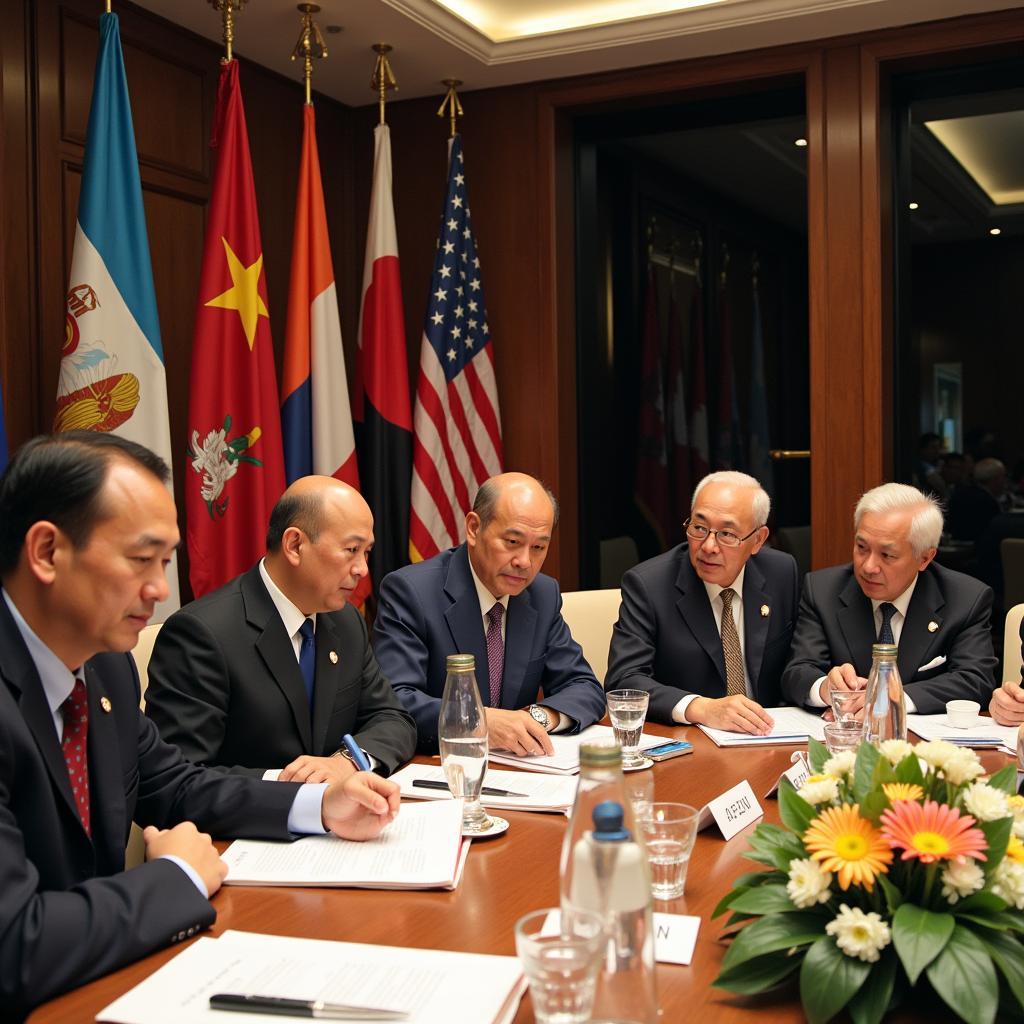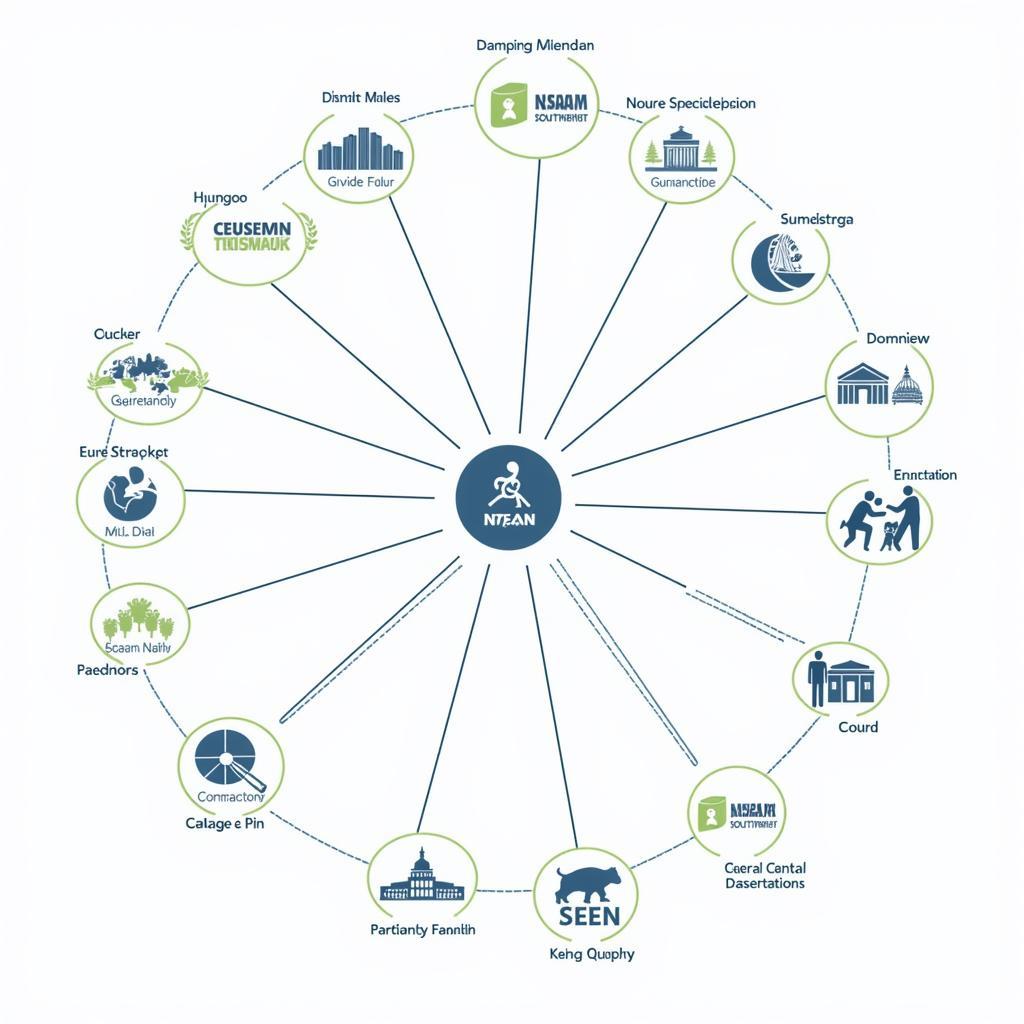The Asean 1st Summit, held in Bali, Indonesia in 1976, marked a pivotal moment in Southeast Asian history. This landmark event laid the groundwork for decades of regional cooperation and integration, shaping the political and economic landscape of the region. It signified the commitment of Southeast Asian nations to work together for peace, stability, and prosperity.  Leaders at the First ASEAN Summit in Bali, 1976
Leaders at the First ASEAN Summit in Bali, 1976
The Significance of the ASEAN 1st Summit
The 1st ASEAN Summit wasn’t just a meeting; it was a declaration of intent. It solidified the desire of Indonesia, Malaysia, the Philippines, Singapore, and Thailand to move beyond bilateral relations and embrace a multilateral approach to address common challenges. The summit also aimed to foster a sense of shared identity and purpose among these diverse nations. The Treaty of Amity and Cooperation in Southeast Asia, signed during the summit, underscored the commitment to peaceful coexistence and dispute resolution. This agreement serves as a cornerstone of ASEAN’s principles and continues to guide its interactions with other countries.
This initial summit tackled crucial issues ranging from economic cooperation to cultural exchange. Leaders discussed ways to enhance trade, promote tourism, and develop joint infrastructure projects. 21st asean india summit showcased the enduring commitment to these goals. The summit also acknowledged the importance of preserving Southeast Asia’s rich cultural heritage and fostering people-to-people connections.
Key Outcomes of the Bali Summit
The ASEAN 1st Summit produced several significant outcomes that continue to shape the organization’s trajectory:
- Treaty of Amity and Cooperation: This treaty provided a framework for peaceful relations and conflict resolution among member states.
- Declaration of ASEAN Concord: This document outlined the shared goals and principles of ASEAN, emphasizing regional cooperation and solidarity.
- Establishment of the ASEAN Secretariat: This administrative body was created to support the organization’s activities and facilitate communication among member states.
Building a Foundation for the Future: The Vision of the 1st ASEAN Summit
The leaders at the 1st ASEAN Summit envisioned a Southeast Asia where peace and prosperity prevailed. They understood that regional stability was essential for economic growth and social development. Their vision extended beyond immediate concerns to encompass long-term goals of regional integration and a stronger collective voice on the global stage. 31st asean summit demonstrated how far the organization has come in realizing that vision.
“The 1st ASEAN Summit wasn’t just about signing agreements,” explains Dr. Anisa Rahman, a prominent Southeast Asian historian. “It was about building trust, fostering understanding, and laying the foundation for a future where the region could thrive collectively.”
Challenges and Opportunities in the Early Years
While the 1st ASEAN Summit set a positive direction, the early years of ASEAN were not without challenges. Political differences, economic disparities, and varying levels of development presented obstacles to achieving the organization’s ambitious goals. However, the shared commitment to regional cooperation and the spirit of resilience prevailed.
The ASEAN 1st Summit’s Lasting Legacy
The 1st ASEAN Summit’s legacy extends far beyond the documents signed and the agreements reached. It established a culture of dialogue and cooperation that continues to guide ASEAN’s interactions today. 31st asean summit theme echoes the foundational principles established in Bali. The summit’s success in bringing together diverse nations with a shared vision serves as an inspiration for regional organizations around the world. 21st asean-japan summit is a testament to the ongoing importance of regional cooperation.
“The vision of the leaders at the 1st ASEAN Summit was remarkably prescient,” notes Dr. Chandra Wijaya, a leading expert on ASEAN affairs. “They understood that by working together, the nations of Southeast Asia could achieve far more than they could alone.”
The ASEAN 1st Summit was a watershed moment, paving the way for decades of regional cooperation and setting the stage for ASEAN’s evolution into a dynamic and influential regional bloc. The summit’s emphasis on peace, stability, and prosperity continues to resonate today, shaping the future of Southeast Asia.
FAQ
- Where was the 1st ASEAN Summit held? Bali, Indonesia.
- When was the 1st ASEAN Summit held? 1976.
- What was the main outcome of the 1st ASEAN Summit? The signing of the Treaty of Amity and Cooperation and the Declaration of ASEAN Concord.
- Which countries participated in the 1st ASEAN Summit? Indonesia, Malaysia, the Philippines, Singapore, and Thailand.
- Why is the 1st ASEAN Summit important? It laid the foundation for regional cooperation and integration in Southeast Asia.
- What is the Treaty of Amity and Cooperation? An agreement promoting peaceful relations and dispute resolution among Southeast Asian nations.
- What is the Declaration of ASEAN Concord? A document outlining the shared goals and principles of ASEAN.
Looking for more information on key ASEAN summits? Check out our articles on the 31st asean summit 2018.
Need assistance? Contact us 24/7:
Phone: 0369020373
Email: aseanmediadirectory@gmail.com
Address: Thon Ngoc Lien, Hiep Hoa, Bac Giang, Vietnam.


